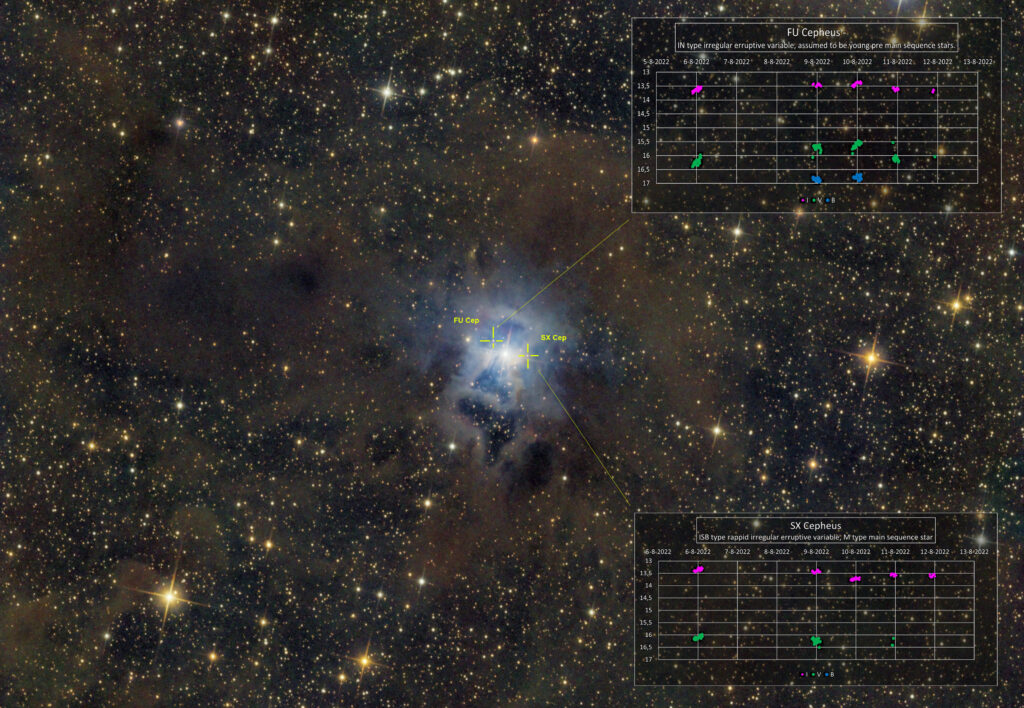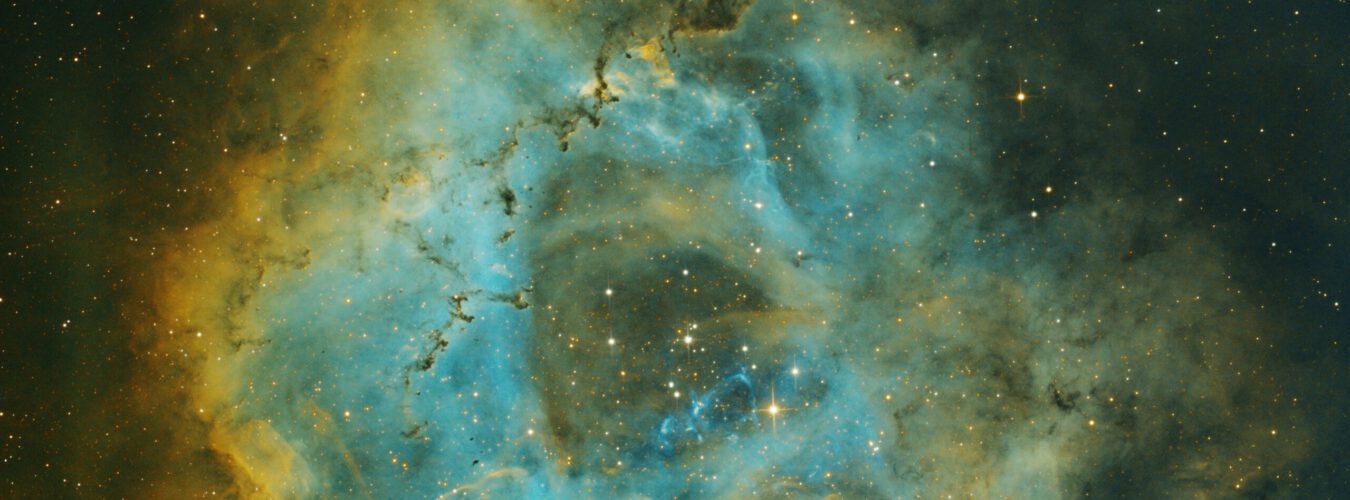Photometry is the method of measuring the brightness of stars in digital images. I have been doing this since 2021. For the photometric analysis I use the tools from the AAVSO (American Association of Variable Star Observers). The measurements I take are also uploaded to the database of the AAVSO. This organisation helps amateur astronomers to be succesfull at photometry, and makes all the data that is uploaded available for everyone to use. With this link you can plot the AAVSO data of any star that is uploaded to the database, just plug in the stars name.
Pulsatings stars in globular cluster Messier 3
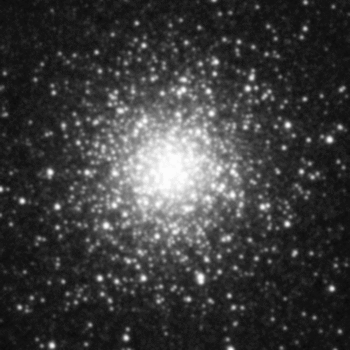
Pulsating star SZ Lynx
SZ Lynx (SZ Lyn) is a delta Scuti type pulsating star. I have recorde this star in R, G and B one night. This star has a very regular pulsation mode, i.e. it generally only pulsates in its fundamental tone without overtones. The star has a pulsation period of 2,89 hours.
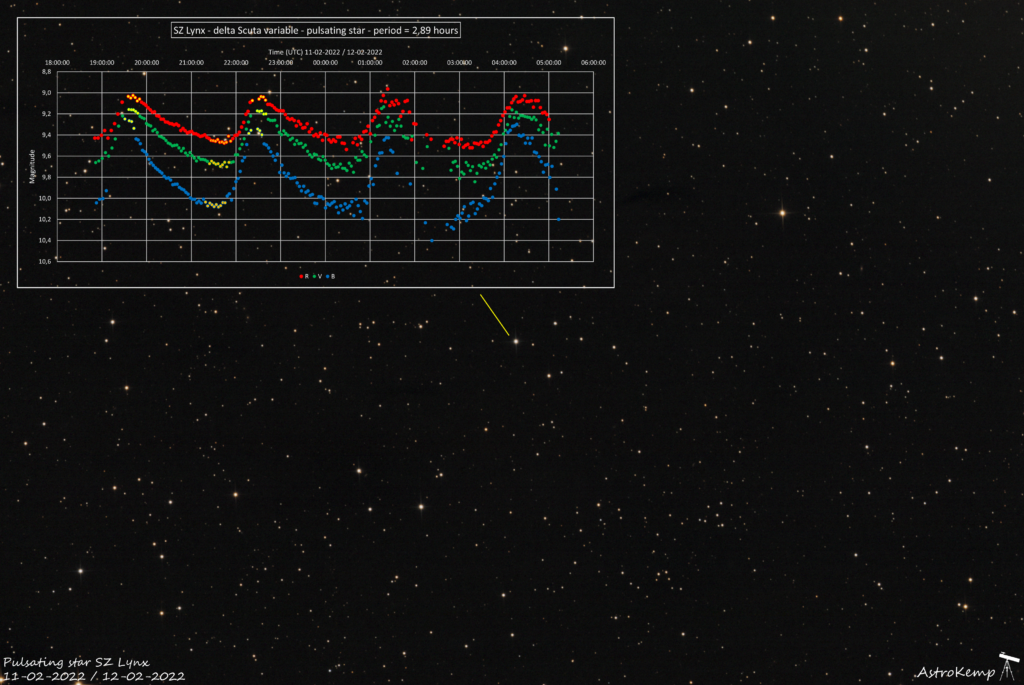

The higlighted datapoints in the lightcurve have been used to animate between peak and low brightness.
Pulsating star AE Ursa Majoris
AE Ursa Majoris (AE UMa) is a SZ Sphynx type pulsating star. This a specific kind of delta Scuti star with irregular pulsations. It pulsates in multiple modes, causing the amplitude and period to be varying. These kind of stars are fast pulsater, with periods from 30 minutes to 3 hours. I find them very interesting because they show clear overtones beside their ground tone.

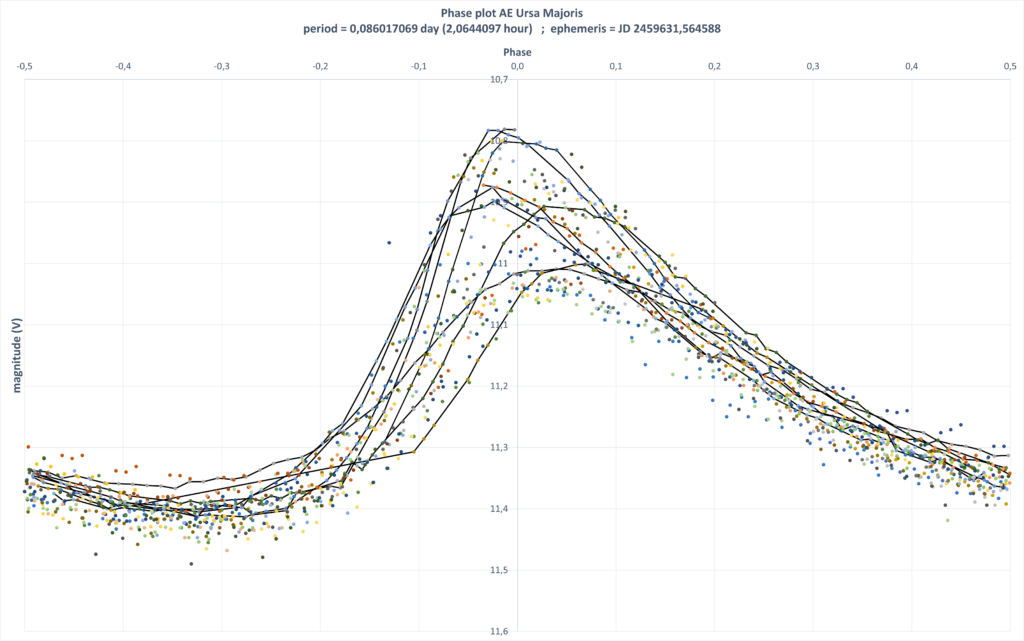
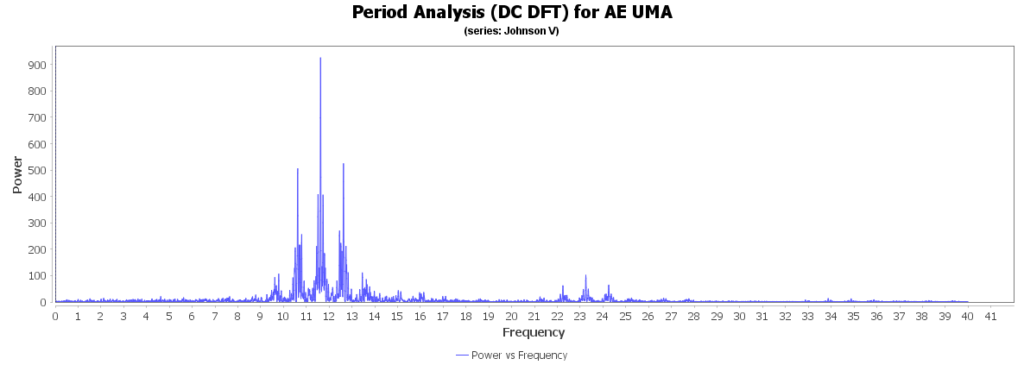
AAVSO has a software packeage, called Vstar, to generate Fourrier transforms of your data. The Fourier transform above of AE UMa shows the ground tone of the star, at 11.7 pulsations per day. But it also shows quite a lote of other pulsation modes around that, and around 23 pulsations per day.
Pulsating star BL Camelopardis
his is a star with a pulsation period of only 0.039109 days or only 56 minutes and 19 seconds !!!.
The star is a SX Phoenices variable. These are stars with a radial pulsation pattern. In other words, the entire surface periodically moves in and out. You can also see that this pulsation is not the same every time. This is caused by 2 main pulsation moded in the star

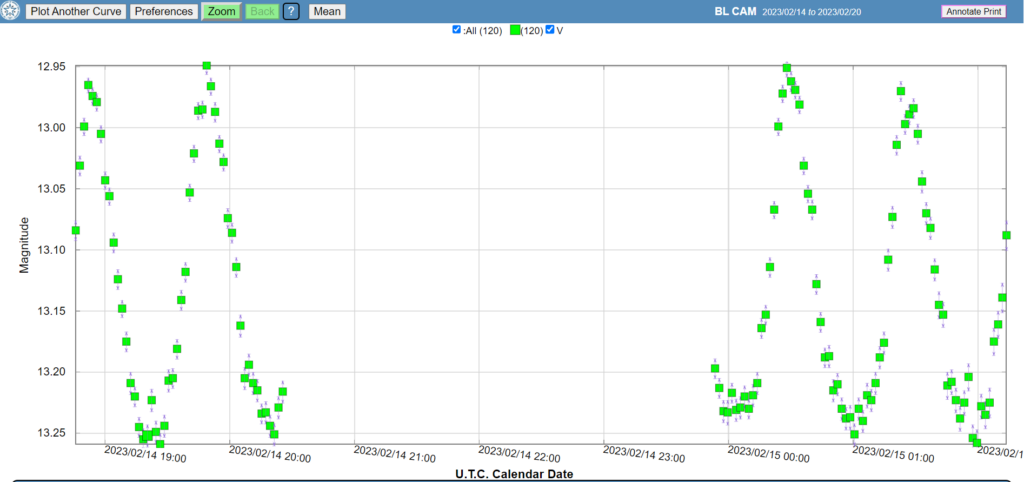
I recorded it for 2 nights, only in V (green) because it pulses so fast. If I keep changing filters then I miss too many points in the curve.

The measurements have been uploaded to the database of the AAVSO. The AAAVSO has also published a nice program (Vstar) with which you can further analyze the data points of a star.
For example, you can do a fourier transform on the data points. This is a mathematical method to find out the different pulsation frequencies of the star. You can see these below, with the frequencies expressed in the period (in days).
Variable red giant Star, S Cepheus
Every clear night since november 2021 I am measuring the varible red giant star S Cepheus. This carbon star has a pulsation period of 484 days. So not a complete cycle yet, but fortunately there are other amateurs of the AAVSO who have been following this star for much longer. The first visual observations date from 1889!!
The brown marked measurements at the end are mine. I use se this star to check if my measurements match those of others.
Since October 2022 I have been using photometric filters for the measurements. B, V (green) and I (infrared). I made an image in RGB in November 2021 and an IVB image with the measurements from the last month. What is striking is that in the IVB image S Cepheus is deep, deep red, like a ruby :)
For the measurements I use the following exposure times:
B: 3 x 180 seconds @ gain 1600 (unity gain) V: 7 x 10 seconds @ gain 0 I: 10 x 4 sec @ gain 0
the star must not be overexposed for the measurements. In infrared this happens already at 5 seconds at low gain. In blue, the star is not yet half saturated after 3 minutes. So this star radiates very much more light in infrared than in green and blue.


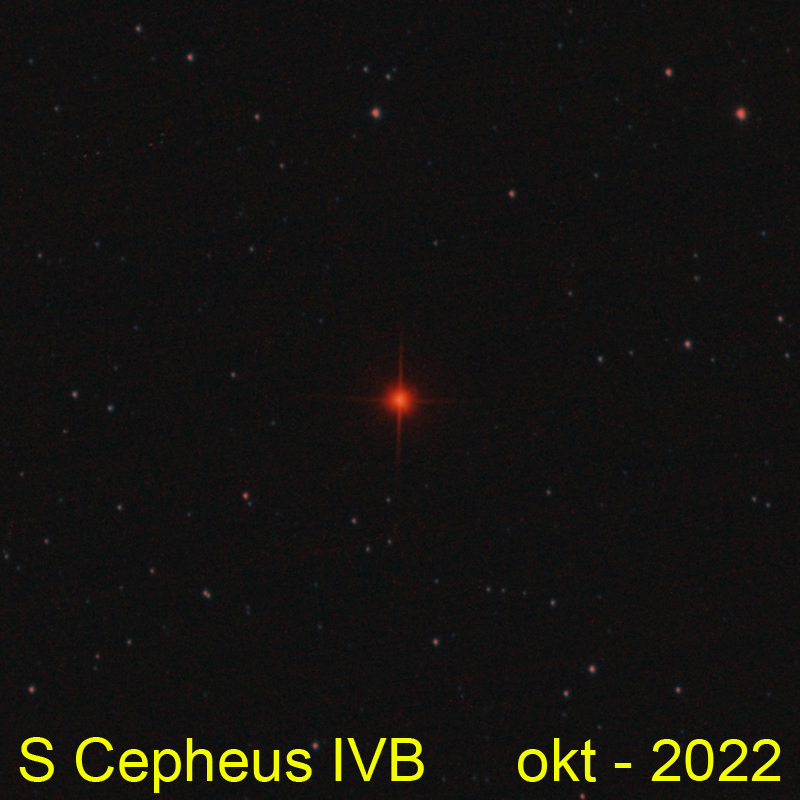
in the long graph, from 1940 onwards, in addition to the period of 484 days, a longer pulsation pattern can be seen on top of that. There was a larger longer lasting dip around 1960.
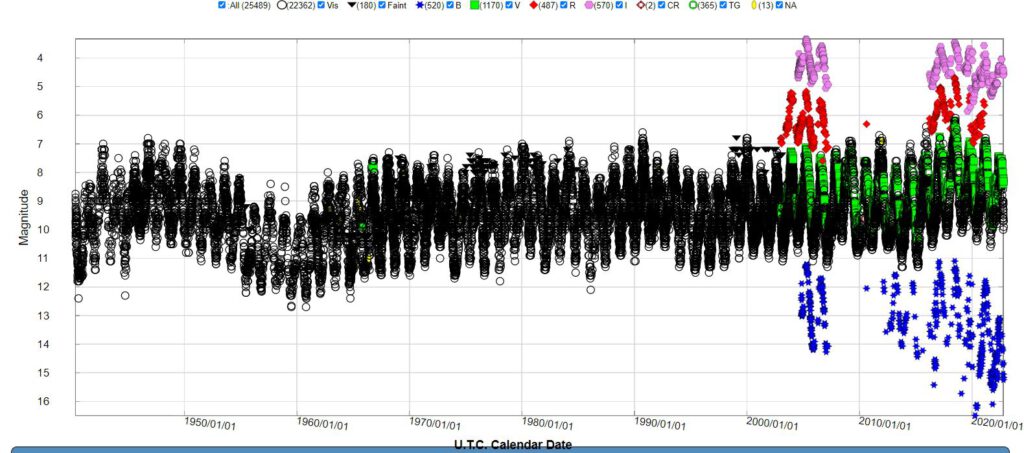
Supernova type 1a SN2022hrs in NGC 4647
In april 2022 a supernova type 1a went of in galaxy NGC 4647, near M60.

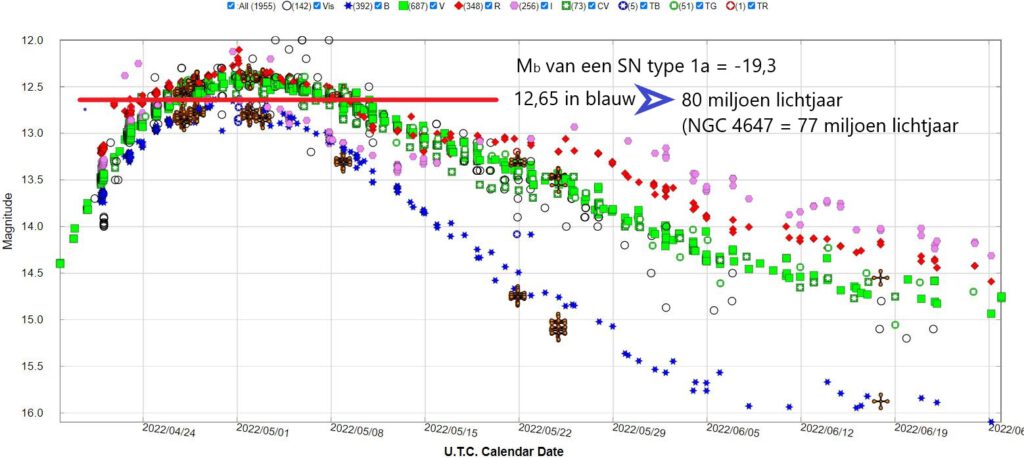
A supernova type 1a is a white dwarf that exceeds the maximum mass by accreting matter of a companion star in a binary. When it exeeds this Chandrasekhar mass limit of 1,4 Solar masses, the whole star detonates in a fusion reaction. This always happens at about the same peak brightness. The peak brightness of a type 1a is -19,3 in the blue. SN2022hrs reached its maximum on the 1st of may 2022, at a magnitude of 12,65. These measurements were made by me and other amateurs from the AAVSO.
Calculating this aparante magnitude of 12,65 back to the absolute magnitude of -19,3 gives a distance to the supernova of 80 million lightyears. According to Wikipedia the galaxy NGC 4647 in which SN2022hrs was found lies at 77million light years. So this measerument would be reasonble with a mismatch of less then 5%.
Young stellar object RY Taurus with protoplanetairy disk
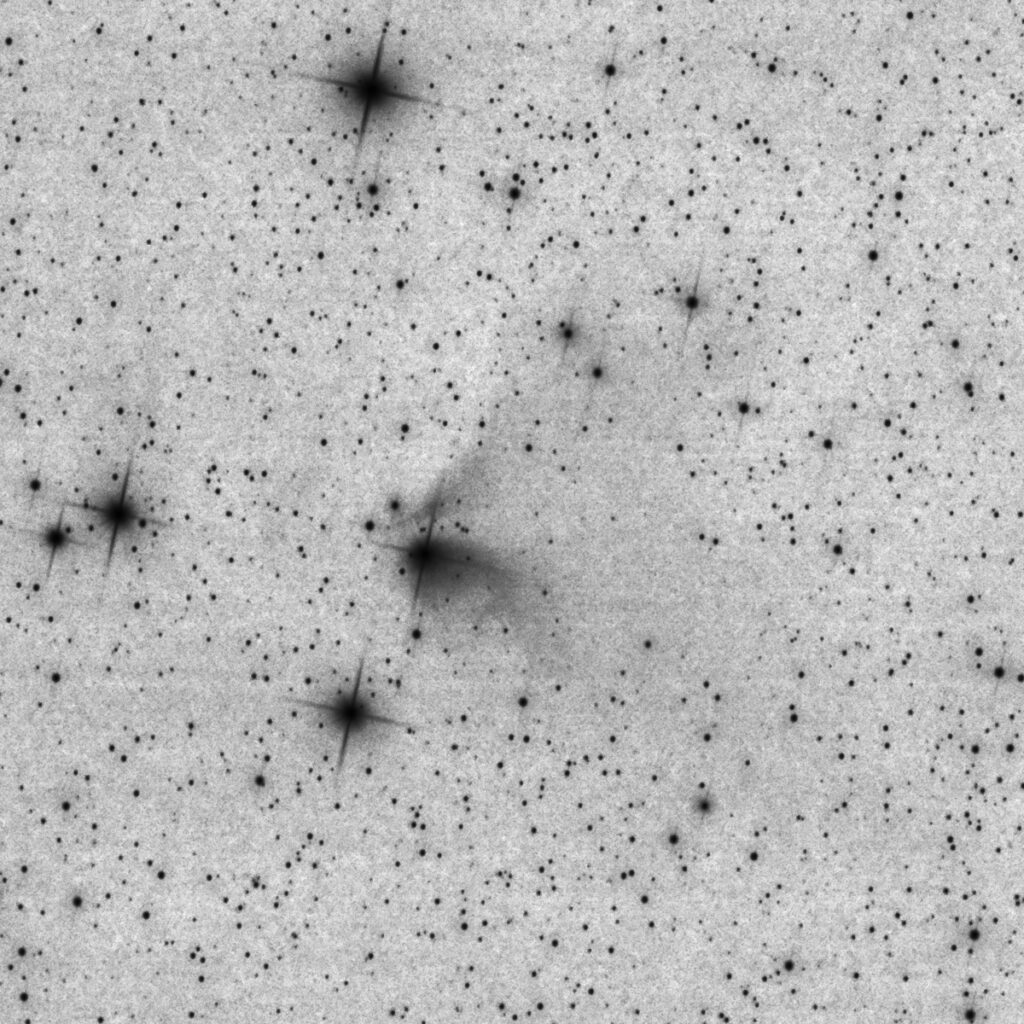

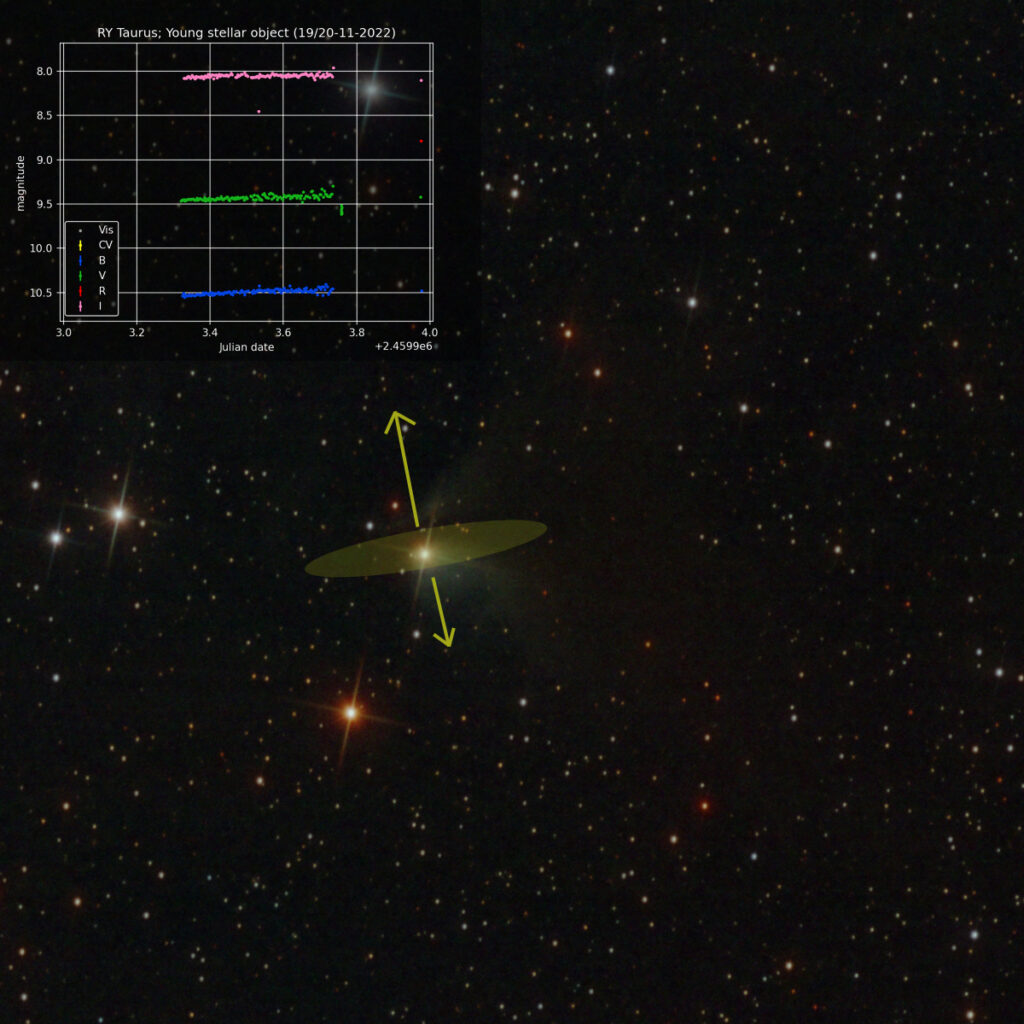
A group of professional researchers doing spectroscopic research askes amateurs of the AAVSO to do complementary brightness measurements in multiple color bands, to aid their research. I measured the star on 19/20 – november 2022. The resulting image shows the dusty protoplanetairy disk around the star in which planets are being formed at the moment. RY Taurus is not fusing hydrogen yet so technically it is not yet a star, the Young Stellar Object (YSO) is now about 4 million years old. RY Taurus has about 2 times the mass of the sun and will start fusing hydrogen in about 6 million years, when it is 10 million years old.
Young flairing stars in the Iris nebula
